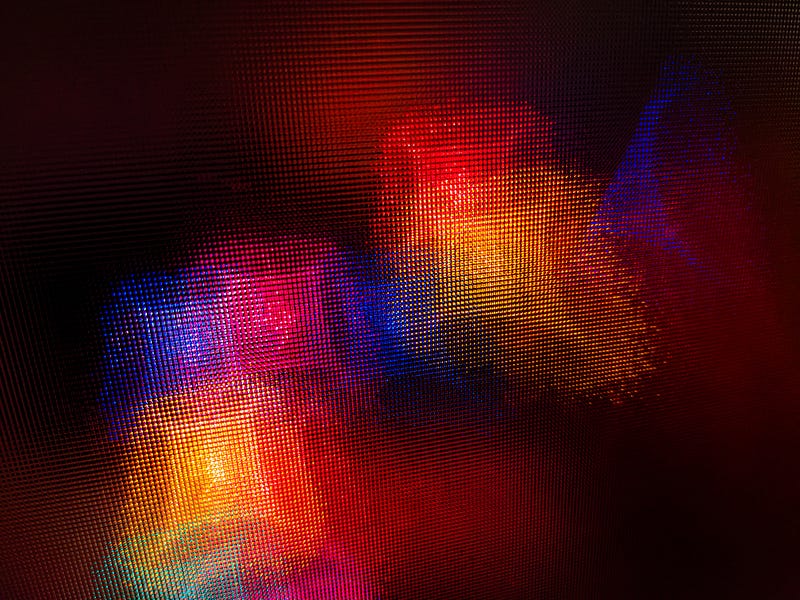Navigating the Future of Psychedelics: A Non-Hallucinogenic Approach
Written on
Chapter 1: Understanding Psychedelic Experiences
Shortly after a psychedelic substance dissolves under your tongue, you might feel the ground shifting beneath you. The environment may appear to warp, and the faces of those around you could morph into unsettling forms. This heightened perception can trigger anxiety, and an overwhelming sense of dread may wash over you.
Psychedelics can induce profound spiritual experiences and hallucinatory states. While many individuals share transformative stories about their journeys, it’s important to acknowledge that not all experiences are positive. Scientific research is increasingly recognizing psychedelics as valuable tools in therapeutic settings.
Notably, psychedelics act quickly and require fewer doses compared to conventional anxiolytics and antidepressants. This translates to fewer side effects, a common issue that often leads patients to discontinue traditional medications. Recent studies have demonstrated the effectiveness of psilocybin in alleviating depression. However, a significant hurdle in prescribing psychedelics for home use remains: the risk of adverse experiences.
Can we develop effective treatments that mitigate the risk of negative experiences?
Section 1.1: The Role of Hallucinations in Therapy
The hallucinatory effects of psychedelics may be secondary to their therapeutic benefits. Psychedelics interact with various serotonin receptors, but only the 5-HT2AR receptor is responsible for the hallucinogenic experiences.
When psychedelic compounds bind to this receptor, it alters its shape, leading to profound effects on mood. This connection between the hallucinatory experience and mood changes is often perceived as causal by the public.
However, emerging evidence suggests that the psychedelic experience may not be essential for therapeutic outcomes. In animal studies, psilocybin was administered alongside a drug that blocked its hallucinatory effects, yet the subjects still exhibited antidepressant-like responses. This indicates that other serotonin receptors might play a more critical role in the therapeutic process.
Subsection 1.1.1: Seeking Non-Hallucinogenic Psychedelics

A collaborative research initiative aims to simplify the discovery of new psychedelic drugs. David Olson, an assistant professor in the Department of Chemistry at UC Davis, stated: “Scientific studies on psychedelic drugs have been conducted since the 1940s, but we still lack an effective cellular assay for them.”
To create this new detection system, researchers must deepen their understanding of the 5-HT2AR receptor. Unlike the straightforward lock-and-key model taught in high school, these receptors interact with a range of molecules, each producing distinct effects. When psychedelic compounds bind, the receptor undergoes a transformation, leading to different cellular responses akin to a line of dominos falling.
Section 1.2: Developing a New Detection System
David Olson and Lin Tian, along with their team, developed a fluorescent sensor attached to the 5-HT2AR receptor. This system, dubbed psychLight, emits light when the receptor undergoes a shape change indicative of hallucinogenic properties. Initial tests confirmed that psychLight successfully detected hallucinogenic compounds like LSD while avoiding false positives from non-hallucinogenic substances.
In studies with mice, psychLight demonstrated its ability to predict psychedelic behavior and serotonin activity. After validating its effectiveness, the team explored new compounds in cell cultures.
One promising candidate, AAZ-A-154, did not induce hallucinations but exhibited prolonged antidepressant effects and enhanced brain plasticity. This marks the emergence of a new class of psychedelics designed to avoid hallucinations. Moreover, real-time detection of hallucinogenic drug effects is now possible.
Chapter 2: The Future of Psychedelics in Mental Health
As we venture into a new era of non-hallucinogenic psychedelics, there is optimism about improving mental health management. These substances act more swiftly than traditional antidepressants and anxiolytics, eliminating the need for daily doses and the risk of withdrawal symptoms.
I look forward to the integration of these non-hallucinogenic psychedelics, which can be safely administered at home. This innovation allows individuals to address intrusive thoughts and anxiety without the fear of a negative psychedelic experience.
From Trip to Triumph: How to Integrate Your Psychedelic Journey - YouTube
This video discusses the integration of psychedelic experiences into personal growth and therapeutic practices.
The Hyperbolic Geometry of DMT Experiences (@Harvard Science of Psychedelics Club)
Explore the complex geometry of DMT experiences and their implications for understanding consciousness and therapeutic potential.